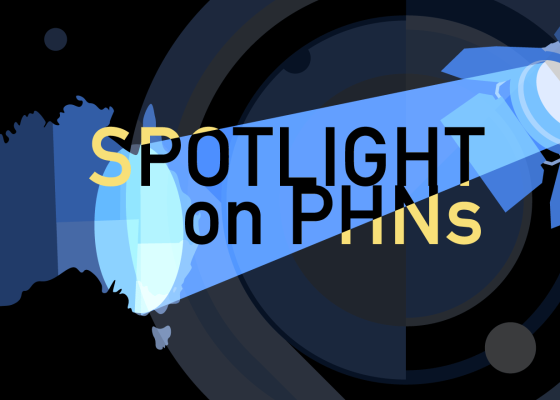If we end up with a great SDFD in NSW do we really need to reinvent it in each state and region? National coordination is a no-brainer.
Imagine if you were pretty sure you needed to go to hospital, but you weren’t in a 000-type emergency requiring an ambulance. You default to another, equally familiar number to you – let’s call it 222 as a good example – knowing that you would know what to do next once you called this service.
It’s a good metaphor for how our national healthcare system works that, at the Digital Health Festival in Melbourne this week, the following scenario occurred.
In one theatre, NSW Health presented a comprehensive and impressive near-term roadmap which anyone who thinks they might need to go to hospital only needs to call one of two numbers to find out what to do.
And in a theatre not 30 metres away, a major virtual health provider from another state stood up and said: “My ultimate vision here is that anywhere in Australia, anyone wanting to go to hospital and who isn’t sure what to do, would only have to call one of two numbers.”
I wanted to put my hand and scream: “Hey, what that guy said … just 30m away, only a few minutes ago.”
Of the two numbers that both speakers had in mind one is the well-known 000 for an emergency when you think you require an ambulance. The other, another easy to remember and dial combination, would be for anyone who isn’t quite sure about what to do if they don’t think they need an ambulance.
Anyone who calls the second number would be rapidly and effectively triaged into one of several possible and connected services, including an appropriate telehealth provider, an urgent care clinic, a pharmacist or other allied health professional, a local GP practice, an ambulance, and even, an in-house virtual GP service.
NSW, in partnership with Healthdirect, is a fair way down the track towards achieving this vision. They’re calling it “single digital front door (SDFD)” but all around the country various jurisdictions are trying to build, or are planning on building their own versions of much the same thing.
What’s single about that?
How much harder would it be to do across Australia what NSW is nearly ready to do in that state?
When NSW is ready, its SDFD is not going to be perfect – connecting to general practice effectively for instance is unfortunately still (embarrassingly) a difficult game – but if results achieved so far are anything to go by, the upside for patients and the hospital system are massive.
According to Dr Amith Shetty, clinical director with NSW Health, in the last 18 months the number of people being triaged towards a hospital via Healthdirect has dropped from 40% to nearly 20% as a result of fine-tuning of the triage process.
What that trend indicates, and a what a lot of professionals in virtual health are increasingly understanding these days, is that the number of patients who think they might need to go to ED but don’t need to is as much 75%-90% of everyone starting the journey of finding out.
The Victorian Virtual ED experiment seems to be proving out many of the points on the efficiency of upstream triage and diversion to a virtual services or appropriate alternative, where appropriate, as well.
The service currently handles more than 600 patients virtually a day, of which, over 70% end up not needing to visit a physical ED.
At an average of something like $700 per patient who turns up in an ED, the average cost of triage by VVED of $300 per patient is a very obvious saving to that state’s hospital system. That’s probably the reason why the Victorian government green-lit funding for the service to the tune of another $235 million so it could build its capacity to over 1000 patients by the end of 2026.
Some people might see the irony in the fact something like 18% of the calls taken by the VVED are triaged calls originating from Healthdirect, but it’s not that surprising because Healthdirect run a national triage service for all the states and territories.
But how each state and territory uses that Healthdirect service varies quite a bit.
NSW Health made a decision to build a much tighter relationship with Healthdirect to build out a robust full service SDFD for the state, including an in-house virtual GP service.
In Victoria Healthdirect mainly just diverts calls on to VVED so far.
VVED is already doing a great job. Why wouldn’t Victoria go the extra mile and integrate it properly with the sort of process and structure that NSW is building out?
Although the VVED project and the NSW Health project are in many respects different to each other, both are aiming at the same end point – less people visiting a physical ED – and by the looks of things, both groups would have a lot to learn from each other by pooling IP and resources.
VVED is using mainly ED doctors in their telehealth service, whereas Healthdirect is building a GP-based service to better manage a selection of calls and then using diversion to services like urgent care centres.
Isn’t centralising all this new learning in one place a bit of a no-brainer for the country?
Of course all the states and territories will need some bespoke work to be done if somehow governments chose to centralise the resource in this way.
Victoria’s hospitals are not as uniformly run as most other states which have more centralised management models and protocols. WA and Queensland have quite unique remote hospital service requirements which would need to be built into any system.
But isn’t Healthdirect ideally positioned to be co-ordinating all these needs and experiences and building centralised IP which would ultimately benefit each state and territory?
If the figures from NSW Health and VVED are accurate, an effective SDFD strategy might be the most obvious, the least difficult and expensive to implement, and the most impactful project that any government or territory in Australia should be considering to reduce the strain on hospital EDs.
SDFD has no downside either for ambitious politicians.
Yet, between the states, and even within state regions – some PHNs have tried to implement versions of SDFDs in their regions – various organisations are busily planning or building their own version of what seems to be a very obvious target for a nationally co-ordinated and delivered service.
The weird thing about this is that Healthdirect reports to and is funded by all the states and territories.
Who is to blame here for not doing what seems so blindingly obvious?
Maybe this is a good agenda item for the next meeting of the Council of Australian Governments (COAG) who established Healthdirect in 2006 mostly with this purpose in mind, and who largely control it.



